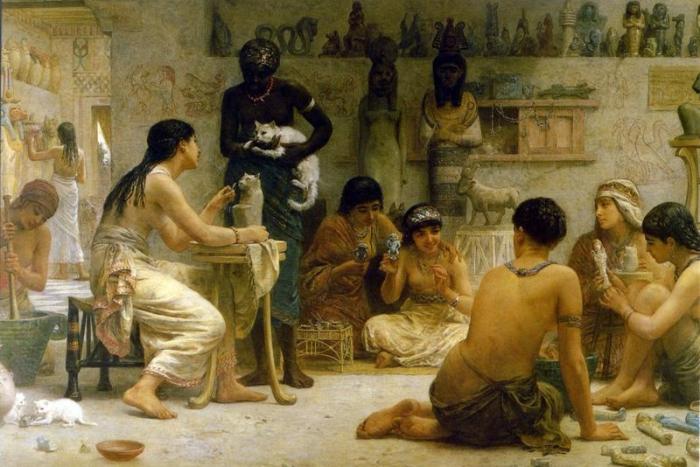The real miracle of the world is the artisans in Ancient Egypt
In 1905, an Italian archaeologist and orientalistErnesto Schiaparelli, already immortalized his name by the discovery of the tomb of Nefertari, the first major wife of Ramses II, made another amazing discovery. On the west bank of the Nile, in front of Luxor, he discovered a group of Theban necropolises, and right next to it - a settlement of artisans who created magnificent temples of the Valley of the Kings. The settlement is, Deir el-Medina, now known to every Egyptologist as a "place of truth," an undistorted mirror that showed how the craftsmen lived in Egypt from the time of the pharaohs.
Deir el-Medina originated under Pharaoh Thutmose I,approximately in the middle of the XVI century. BC. e. However, the original art of the craft was familiar to the ancient Egyptians long before this event. Archeologists know of artifacts of a very high quality, dating from the early Bronze Age (about 3 thousand years BC). From bronze and copper, tools, utensils, figurines and weapons were made. Iron at first was so scarce metal that the ancient Egyptians considered it a fallen star sent from the sky.

Another respected group of artisans were those,who worked with the tree. This was due to the lack of quality wood: on both banks of the Nile grew, mainly palms, plane trees and sycamore. Of these, ordinary furniture was made. Monopoly possession of the pharaoh by trade allowed to deliver to Egypt from the eastern countries pine trunks, which went to the ship's needs. And from the countries of the South, imported the most expensive ebony, from which were manufactured luxury goods and furniture for the upper strata of society.

For ordinary people intended products fromclay and reeds. Artisans in Ancient Egypt established a mass production of pottery and wicker chairs, mats, baskets. On the dishes you can often find jewelry in the form of figures, reliefs, images of gods, people and animals.
The production of linen cloth dates back tothe first dynasties of the pharaohs. Tissued it with the help of vertical and horizontal machine tools. The paint was also made to paint it. About the colorfulness of linen clothing can be judged by color paintings in tombs and temples.
The picture will be incomplete, if not to mentionproduction of papyrus, which became an integral symbol of ancient Egyptian history. Monopoly for the harvest and processing of reeds, which was abundant in the delta of the Nile, also belonged to the pharaoh. Artisans in ancient Egypt processed cane fibers and stems, and a papyrus was obtained for writing, thanks to which we received valuable information about events that took place several thousand years ago.

From the discovered during excavations in Deir el-Medinaset of details as a mosaic is a single picture that shows the life of artisans in ancient Egypt. On the one hand, they were slaves of their involvement in the secrets of erecting tombs: each of them was looked after by the manager, and the village separated from the rest of the world a high wall. However, they were allowed to live with their wives and children. And in general, in comparison with other artisans, their position was considered privileged.
With Deir el-Medina, the most surprising forAn ancient world event - the first strike in the history of mankind! Yes, artisans in ancient Egypt once decided to defend their rights after they were not paid for their labor for a long time. A document telling about this is called "Papyrus strike".
Everyone who has ever visited Egypt visitedhis museums, he saw the creations of human hands of that time, the grandiose constructions erected, understands: the main miracle of the world here is not pyramids and sarcophagi, but ordinary people who created them, who knew a lot about their craft and who never received a worthy reward for it.







